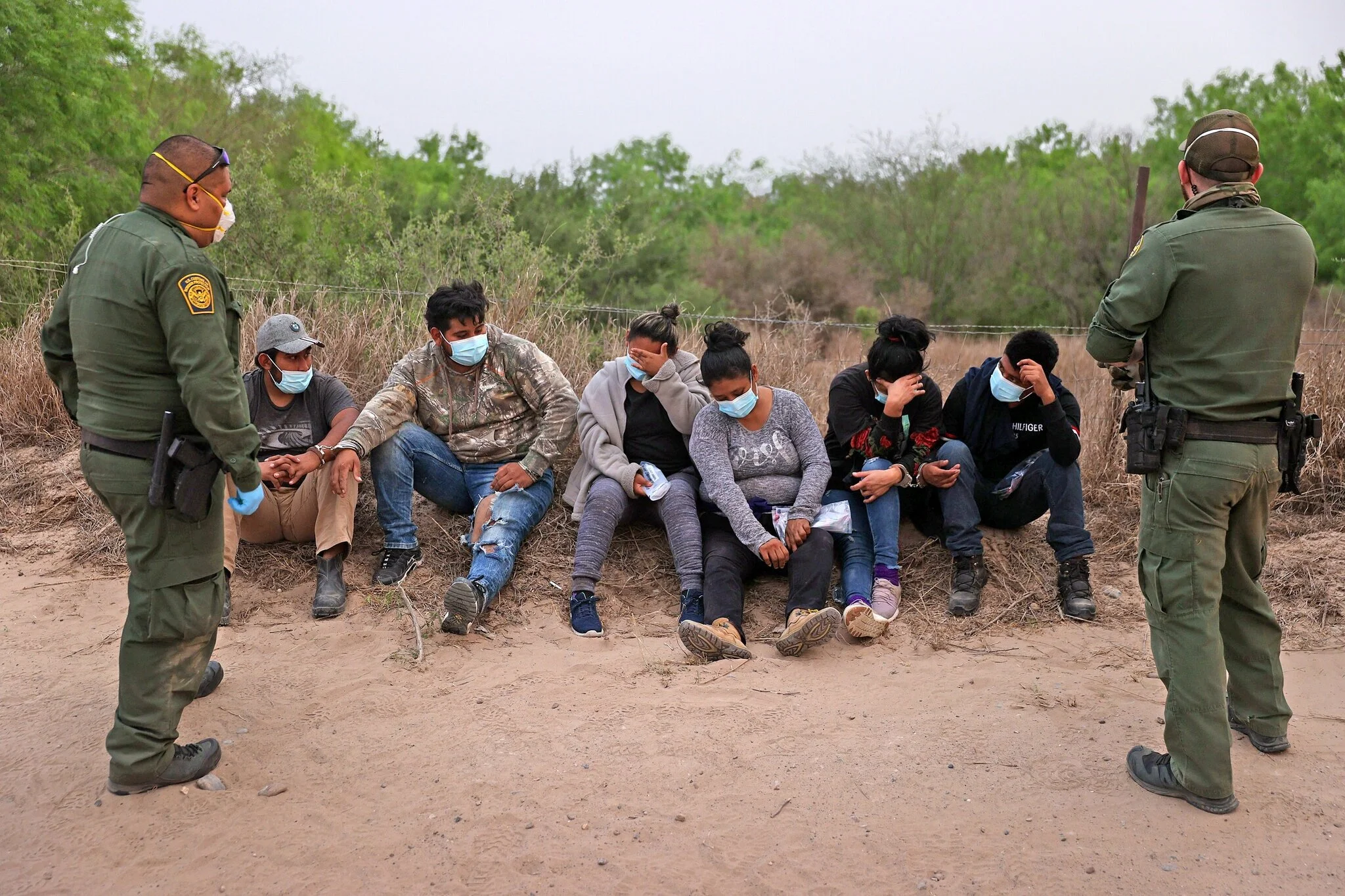He Who Called Crisis: What's Going On at The US-Mexico Border?
“U.S. Border Patrol agents processing a group of people last month that they had caught crossing the border from Mexico in Penitas, Texas.” Source: Getty via NYT.
The coverage of the southern border between Mexico and the United States is often portrayed as a political issue as opposed to a humanitarian crisis in the media. Partisan media outlets tend to cover and push a narrative more among the coverage depending on the administration currently in office; now, with the Biden administration, the southern border tends to be covered extensively through conservative media. Whereas during the Trump administration, liberal-leaning media often pushed a “kids in cages” narrative — which is a true and longstanding one, but one that has been a reality since the Obama administration. Such partisanship is ultimately desensitizing people of the true nature of this issue: at the southern border, a humanitarian crisis rooted in familial separation and inhumane treatment.
In regards to immigration policy, former President Trump claimed that “They [Obama administration] built the cages,” and that they were simply reacting to it. He, although without significant context, is right: the Obama administration built its first chain-link fence in 2014. Such was done in response to an exodus of immigration — specifically that of immigrant children — and similar actions followed. Because many of those who arrived were unaccompanied children, they were placed in warehouses for shelter. Their treatment was inadequate in terms of food supply, water, and hygiene. However, the U.S. border agents did not separate those children from their parents, until the implementation of the “zero-tolerance policy.”
Adapted by the Trump administration in early 2018, the zero-tolerance policy took an exponentially stricter approach towards immigration at the southern border. Families who arrived together now had the legality to be separated as opposed to being detained together at detention centers. As children cannot be imprisoned, they were detained at detention centers in federal custody while their parents were imprisoned; as a result, thousands of children were separated from their parents. This policy lasted essentially all four years of the Trump administration and was recently overturned by the Department of Justice. Subsequently, the Department of Homeland Security announced that it would pause deportations for noncitizens in the United States for 100 days, but a federal judge has since blocked that plan.
However, conditions at the border remain the same. It is difficult to pinpoint what really goes on at the southern border, as it is closed to the general public and journalists have not been permitted inside the camps since the Biden administration. Occasionally, photos are released by the administrations and they are jarring: children are seen huddled together and sleeping in foil blankets on the floor — held so close together that they can reach and touch their neighbors. It was also reported that they have not been given adequate access to soap or food. As of late March 2021, border patrol agents were holding nearly 16,000 unaccompanied children in custody.
This is typically where media outlets stop in terms of coverage. They fail to exemplify that this is a humanitarian crisis, and that a humanitarian crisis needs aid to lessen its severity. Yes, there are “kids in cages” — but these children are more than political talking points. It is indeed up to the presidential administration to take a more humane approach, but the ultimate issue lies within why this is occurring and not progressing towards a proper solution — why are immigrants not offered the opportunity to receive a Green Card? Adequate shelter and housing until documentation? Why has the border crisis become so normalized in the media?
The United States has historically let in a plethora of refugees who have enriched the nation through culture, industry, and productivity. Yet, those at the southern border are dehumanized and humiliated because they immigrated here looking for the one thing the United States prides itself on: opportunity.

